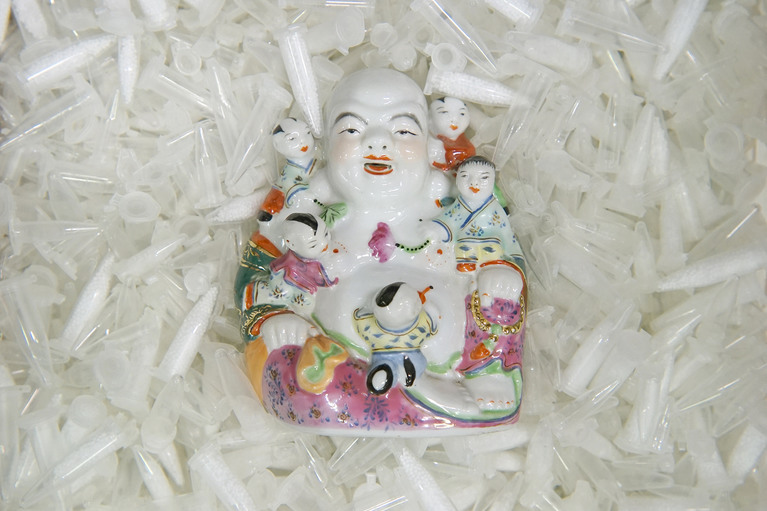You Turn Your Back On Me — Trevor Yeung

You Turn Your Back On Me will be Trevor Yeung’s second solo exhibition at Galerie Allen.
A FISH STORY
Trevor Yeung is fascinated by guppies, a species of tropical fish. One time, he dreamt he was back in his childhood bedroom filled with aquariums, one of which had a number of guppies giving birth. Tiny newborn fish, or fry, spewed profusely out of their mothers, who seemed drained of their own lives. The discharge coloured the tank’s water an opaque white, where some of the offspring immediately died on arrival. A spectacular scene, he said, the vitality violent yet sublime. Luckily for Yeung, that vision of fishy mayhem and box breeding frenzy was limited to the dream, and free from a pungent reality.
Guppies are small in size and fantastically coloured. The female’s body is less colourful and its abdomen often translucent where the eggs are visible. A female guppy begins to reproduce at two to three months of age. Able to birth thousands in its lifespan, making the species one of the most available tropical fish species on the commercial market. The guppy can be seen as a metaphor for the constant, repetitive, non-stop and high-speed modern system of industrial production, – transparent bodies housed in transparent structures. In this body of work, Yeung has filled clear plastic vials, sold as seed containers, with grains of sand and silicone pellets, transforming them into avatars for the guppies – squashed, buoyed up, and appearing to be about to spawn inside the fish
tanks. Beyond their transparent forms, the body of the guppy is an analogy for plastic—mass-produced and constantly polluting its surroundings. The cylindrical and hexagonal shaped aquariums in Yeung’s sculptural assemblages with their lighting and decor allude to the quintessential eclectic urban aesthetics of the 1980–90s in East Asia and in particular Hong Kong. A mishmash of Confucian conviction, neo-classical flair, and modernist geometry in primary colours—an everyday setting born out of aspirations to modernity, defining and confining the fish’s living space, with style and cruelty. Between the three aquariums, Yeung tinkers with the connection between mass production and social spaces—childbearing coercion in the name of Asian tradition; production management and isolation based on Zweckrationalität (instrumental rationality). In his works featuring flora and fauna, the fish tank presents a miniature of human society, supposedly built with immaculate administration and precise management. Just like the current condition of our world and careening supply chains, the tank is bursting at the seams. Its mucous milky white water, akin to semen, hints at the system’s overabundance—of desire, production, and consumption.
Yeung didn’t set out to ponder lofty issues. He saw in that dream the guppy’s fleeting, strenuous life; and in its reflection, his own insatiable desires and ambitions, toil and anxiety. The lifelessness of a few guppies is summoned in watercolour through sheer rice papers layered upon each other. And with ready-made materials, he reconstructs the process of desire manufacturing in a way making transparent the romanticisation and fetish of mass production by the logic of modernity, through which the individual’s alienation is laid bare alongside the system’s malfunction.
In the Chinese fable Ye gong hao long (Duke Ye Who Loves Dragons), Duke Ye was famous for his love of the mythical creature, and embellished his home with dragon motifs. The actual dragon, intrigued and fancying a visit, descended upon the mansion, breathing down the grand hall with its colossal face and tail overshadowing different directions. The duke scurried for his life. Sometimes, what appears charming conjures great fear.
— Qu Chang